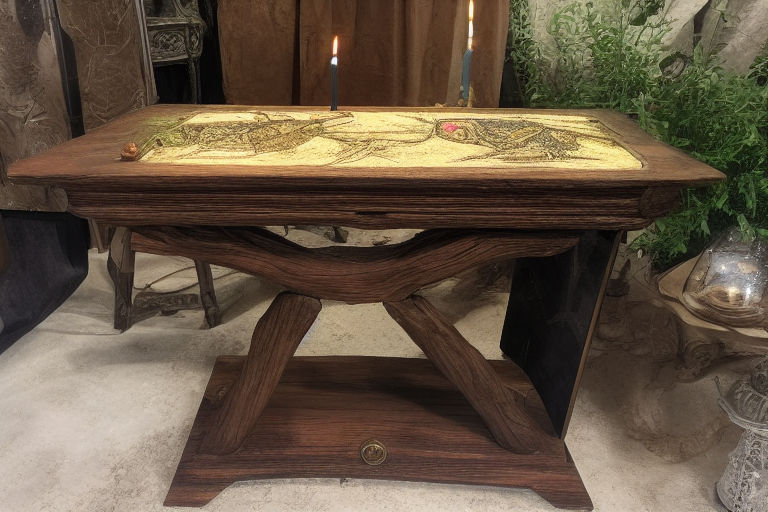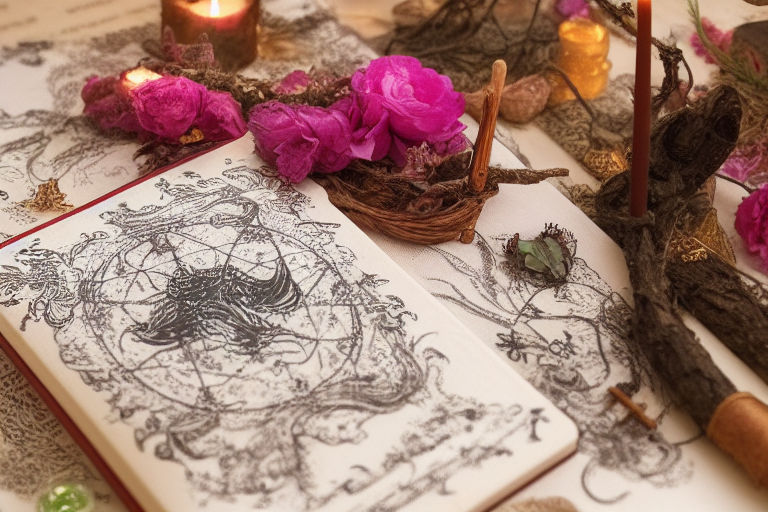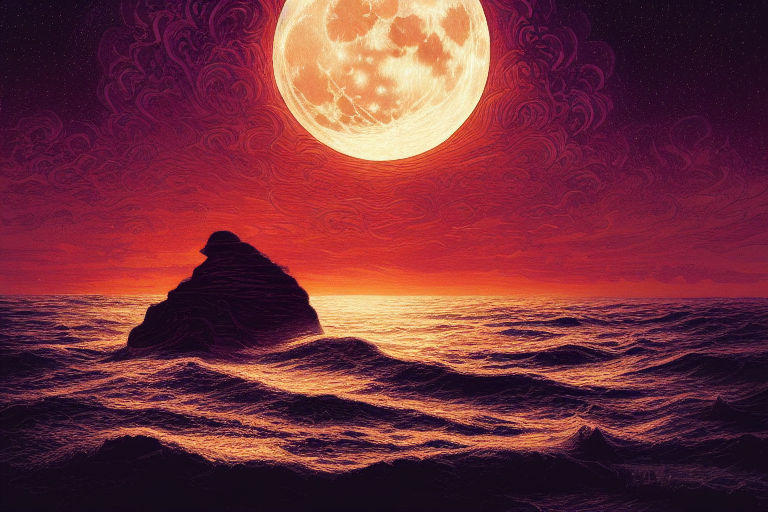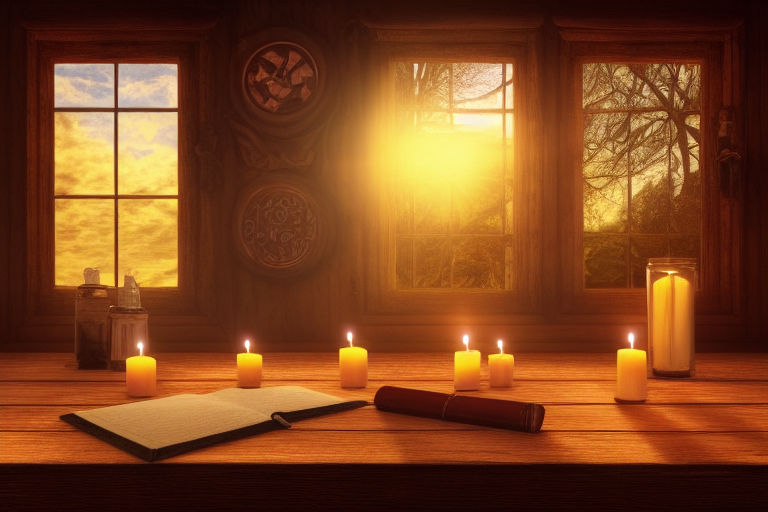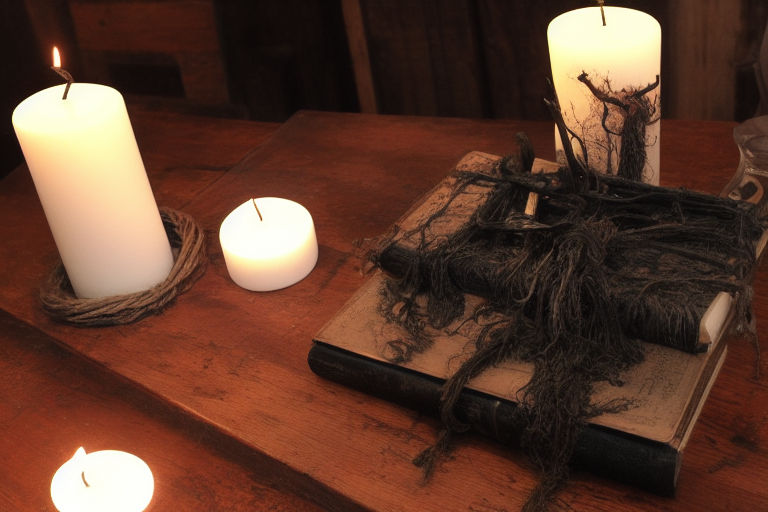What is Another Name For Samhain?
Samhain, also known as Halloween, is an ancient celtic holiday. It’s celebrated on the night of 31 October to 1 November. It was a festival that marked the arrival of winter and the start of a new year. It was also a time when the dead were believed to return to earth.
When you make a purchase through links on our site, we may earn an affiliate commission. As an Amazon Associate I earn from qualifying purchases..

Tochmarc Emire
In Irish mythology, Samhain is a month which marks the end of the summer and harvest season. In the Coligny calendar, Samhain falls midway between the autumnal equinox and the winter solstice. In medieval Ireland, Samhain was celebrated as October gave way to November.
Samhain is one of four main festivals, often called ‘Sabbats’, of the Celtic calendar. Traditionally, this was a time for taking stock of livestock. After six months, cattle were brought down to winter pastures, and Samhain was the time to choose the livestock and foods for the coming winter. It was also a time to slaughter animals, particularly lambs for food. This celebration was widely observed among farmers and herdsmen.
Samhain is often mentioned in Irish literature. While these stories were originally passed down orally, they were later written down in the Middle Ages. In Irish mythology, Samhain often involved battles with supernatural beings. The story of Fionn preventing the spirit from burning down the ancient city of Tara is a prime example. The Irish high kings were also crowned on this day.
Samhain is a Celtic pagan festival that marks the end of the summer and harvest season. It is related to a folktale about the demigod Cu Chulainn. In the tale, Samhain is referred to as one of four quarter days of the year. In Gaelic Ireland, time was measured differently: it began at sunset, and the darker half of the seasons marked the time when crops were dead.
Samhain
Samhain, or Samhainn, is a Celtic New Year. This ancient festival is associated with many important events in Irish mythology. It is associated with feasts, sacrifices, and great gatherings. It is also associated with ancient burial mounds. Many of the burial mounds in Ireland align with the time of Samhain.
In Celtic culture, the Samhain feast marked the end of the old year and the beginning of the new. Traditionally, this event was celebrated by inviting the spirits of the ancestors. Families would invite the dead to participate in the feast, and children and adults would play games with them to keep them busy. They would also share stories about their past, and they might even leave open their doors for the dead to come in. In Wales, the Mari Lwyd procession is similar to this custom.
Samhain is one of the four major festivals in the Gaelic calendar. It marks the end of the harvest and the start of winter. In ancient times, it was also the time to take stock of a herd and choose livestock for the winter. Farmers would also slaughter animals to make winter food for the family.
Another name for Samhain is Beltane. This traditional festival was celebrated by lighting bonfires. These were believed to keep evil spirits from invading the earth, and also provided a warm place to gather with family and friends. In Ireland, many people would also set off fireworks, perhaps a carryover from Guy Fawkes Night. Another tradition for lighting a bonfire is dropping a strand of hair into the flames. It is believed that this ritual can help a person dream of their spouse.
Tochmarc
Samhain, also known as the winter solstice, is the first day of winter in the Celtic calendar. It is a time when people are reminded of the year that has passed. Many Celtic festivals were held on this day. However, Samhain is celebrated in a slightly different way in many other countries. Some countries celebrate it on the first day of the month, which is the 31st of October.
In early medieval Ireland, Samhain was a major festival. It was a time when the harvest of cereal was complete and the time of war and trading was over. Samhain was also a time when the first born child of a male was sacrificed at the stone idol Crom Cruach.
Samhain is also associated with fire. It was customary for household fires to be extinguished on this day. In addition, a communal bonfire was lit and used to cleanse the house and welcome a new year. Two sites associated with Samhain are the Hills of Tara and Tlachtga. These are both located in County Roscommon and are about twelve miles apart.
Other traditions associated with Samhain include mumming and guising. Guising involved people going from house to house in disguise, reciting songs in exchange for food. This may have originated from the belief that the dead seek hospitality from living people. The belief that the dead have souls is common in many cultures and beliefs.
Samhain as a Christian holiday
Christians have long embraced Samhain as a holiday, but it was not always so. It has its roots in Celtic traditions, and was celebrated in Britain for centuries. It was considered a time of rebirth for the dead, when the veils between the worlds were thin and spirits could communicate with the living. The Christian church eventually incorporated these Celtic traditions into its own holiday calendar, including All Saints Day and All Hallows’ Eve. Even though the celebration now includes Christian symbols, it retains many of its elements of memory and celebration.
The ancient Celts celebrated Samhain with rituals. They wore costumes and impersonated spirits to collect offerings. This custom is still practiced by modern pagans and Wiccans. Some pagans even have “dumb suppers,” where the dead are honored by eating a meal in silence. In addition to this, altars are built to remember loved ones. These altars are filled with sweets and Samhain bread.
The Celtic festival of Samhain is celebrated on October 31st. In addition to being the ancestor of Halloween, Samhain also marks the middle between the autumn harvest and winter solstice. It also marks the beginning of the dark part of the Celtic year.
Samhain as a Celtic festival
Samhain was a Celtic festival that embodied the concept of liminality. Many important events in Celtic mythology took place in liminal spaces or times, such as the transition from summer to winter. Samhain was the time when the boundaries between the worlds of spirit and human were broken. During this time, humans and spirits could act with greater agency.
The celebration of Samhain was a religious and social celebration, and in many parts of the world, this holiday is still celebrated to this day. The pagan festival is also a time to consider the end of the season and the opportunity for new beginnings. Samhain rituals can be performed by individuals or groups of friends and family, and are an excellent opportunity to release positive affirmations into the universe. Though Halloween is more popular today, Samhain remains an important annual festival. It celebrates nature, honors the dead, and sets intentions for the new year.
Samhain celebrates the end of the harvest season and the onset of winter. It is associated with darkness and death, so many Celtic festivals celebrate this dark time of year with fire. The Celts believed the dead roamed the earth on Samhain night, so they lit large bonfires, dressed in costumes, and left their doors open to welcome the spirits of the dead. During this time, they also relit their personal hearths to honor their loved ones.
Samhain was also a time for rituals and prophecies, which were important to the Celtic faith. A time for mumming or singing to the dead and enacting rites to ward off evil spirits was central to the festival. In ancient times, Druids would circle the tribal bonfire with the skulls of their ancestors as a protective ritual against demons. Today, children dress in black masks and enact various rituals during this time of year. Other customs related to Samhain include carving turnips in the shape of skulls. This custom is still common in many Neopagan and Wiccan communities.
Samhain as a Wiccan holiday
Samhain is a day to remember our loved ones who have passed on during the year and reconnect with them. Wiccans celebrate the day with a circle, holding hands and naming the deceased in their thoughts. In this tradition, the deceased can never really die, since they are remembered, so they never truly die. Samhain is also a great time to celebrate with friends and family. The holiday is very easy to celebrate, and Samhain can be celebrated with a wide range of traditions.
In Celtic tradition, Samhain was also a time of divination. During this time, the spirits of the dead would come to earth to play tricks on people. As a result, many community members would dress up in costumes for the day. These costumes were called “guising.” Besides dressing up, Samhain rituals also involved singing and reciting poems and verses and asking for food from strangers. Some Wiccans even go so far as to visit a cemetery to honor their departed family members.
The traditions surrounding Samhain are as old as the celebration itself. The “dumb supper” is one of the oldest traditions of Samhain. This is when the dead were invited into the home by the living, and people would entertain them by playing games for them. The adults would then update the spirits of their loved ones. They may also leave the doors open so that the dead could visit them.












